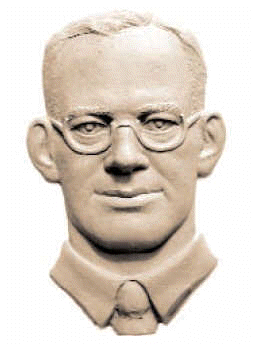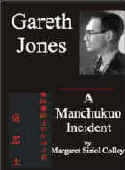Gareth Jones
[bas relief by Oleh Lesiuk]
HOME |
Stop Press |
Complete Soviet Articles & Background Information |
Précis of Gareth's
|
All Published Articles |
BOOKS
|
|
|
|
More Than Grain of Truth(2005) |
|
|
TOPICAL
'Are you Listening NYT?' U.N. Speech - Nov 2009 |
Gareth Recognised at Cambridge - Nov 2009 |
Reporter and the Genocide - Rome, March 2009 |
Order of Freedom Award -Nov 2008 |
Premiere of 'The Living' Documentary Kyiv - Nov 2008 |
Gareth Jones 'Famine' Diaries - Chicago 2008 |
Aberystwyth Memorial Plaque 2006 |
GENERAL
Scholarship Fund |
Site Map |
Links |
Legal Notices |
Sponsored Links |
Contact |
|
Japan obtained similar concessions in Chahar province as in the Hebei province and Chiang realised that China would have to stand firm against further demands from the Japanese. Much of his time had been spent combating the Communists in the south. Mao Tse-tung and his Communist followers were in the southwest and 1935 was the year of the Long March. During these last negotiations Gareth was travelling north of the Great Wall of China with his German companions Baron von Plessen and Dr Herbert Müller to Prince Teh Wang’s court. Prince Teh Wang, leader of the Mongol Princes was keen to establish his own independent government of Inner Mongolia. Wang’s arrangements with Nanking failed and then he turned to the direction of the notorious Japanese secret agent Major General Doihara. He had the task of sponsoring Chinese leaders to establish their own autonomous regimes in 1933. From then on Prince Teh was secretly in league with the Japanese at the shrine of a Hundred Spirits. Little by little, Teh’s Mongol Government gained allegiance of Inner Mongolia’s seventy-seven tribes or ‘banner’, but realising that they would be entirely dependent on Japan, many of the Silingol banner and others eventually stopped supporting him. Early attempts at southwards expansion had failed because
the Japanese (Kwantung) Army believed the northern warlords could be bribed
into declaring independence from Nanking. In November 1936 Prince Teh Wang, his Mongol roughriders and the
Kwantung Army, underwrote a Mongol expedition force to establish an independent
Inner Mongolia. The Chinese National
Forces at Pai Ling-miao in Suiyan province soundly beat Teh’s troops. Though he had once been a strong supporter
the Young Marshall, Chang Hsueh-liang, lost faith in Chiang Kai-shek following
the He-Umetsu Agreement, as the 51st Army in Hebei (Hopei) was his
army. Chang established contact with
the Communists in 1936 and also with Zhou En-lai. He captured Chiang in Xian on December 12th of that
year and persuaded him that the Communists (CPP) and the Kuomintang (KMT)
should present a united front against the Japanese. He kept the Generalissimo captive for two weeks until he agreed
to abandon his anti-Communist campaigns and resist the Japanese in their
aggressive plans. Chang persuaded Chiang to become the leader of a united
China. |
Hirohito in Imperial Robes. |
|
|
|




